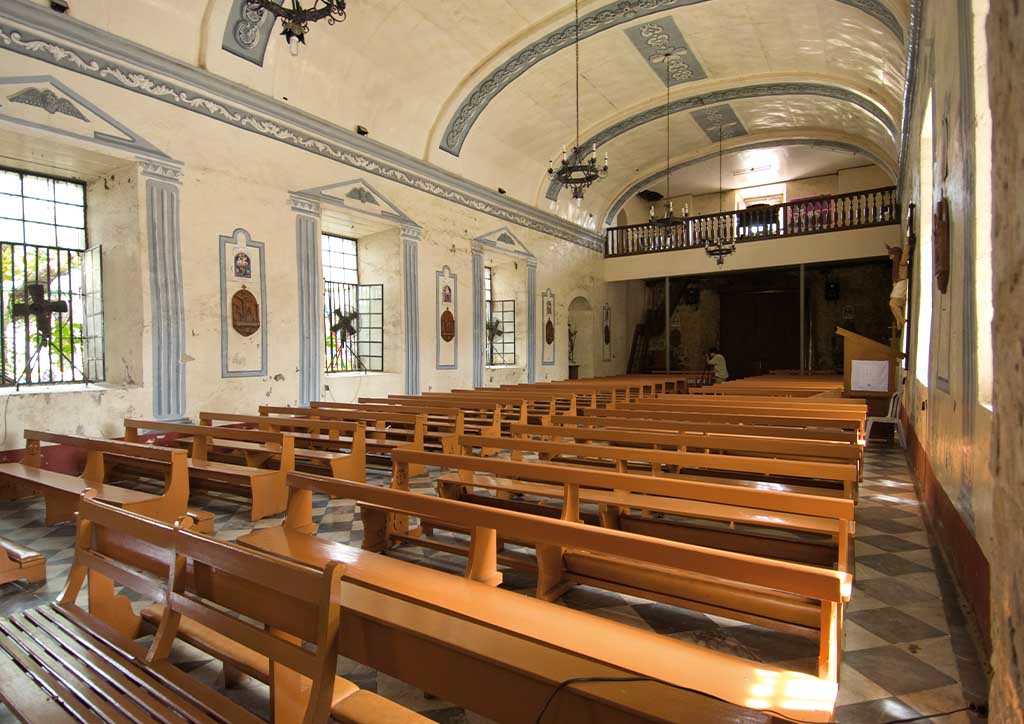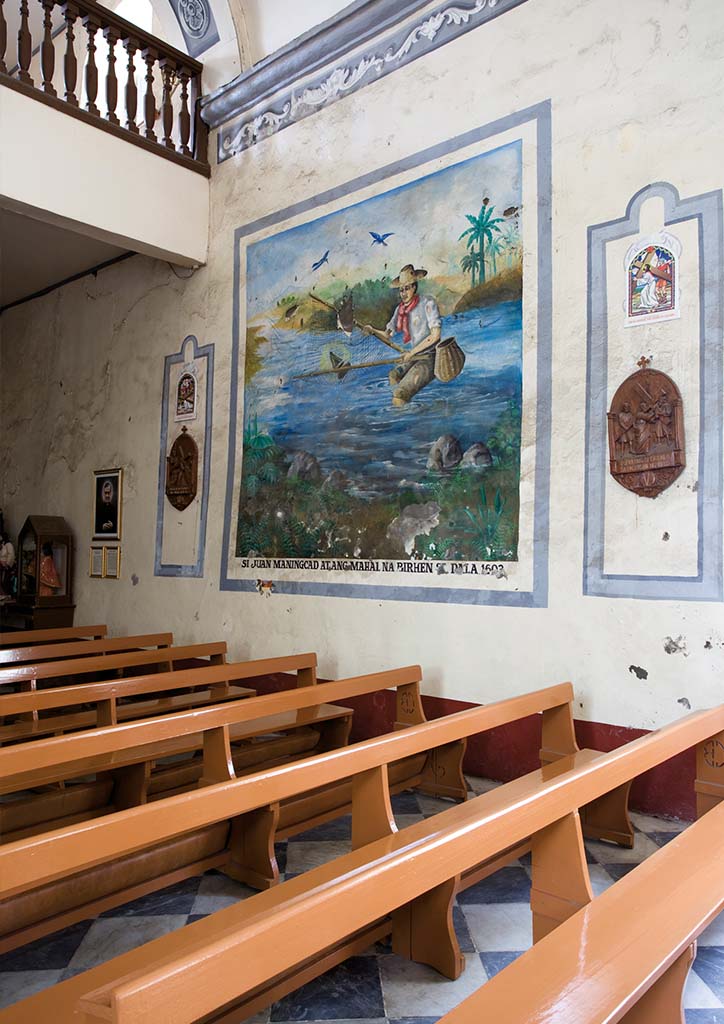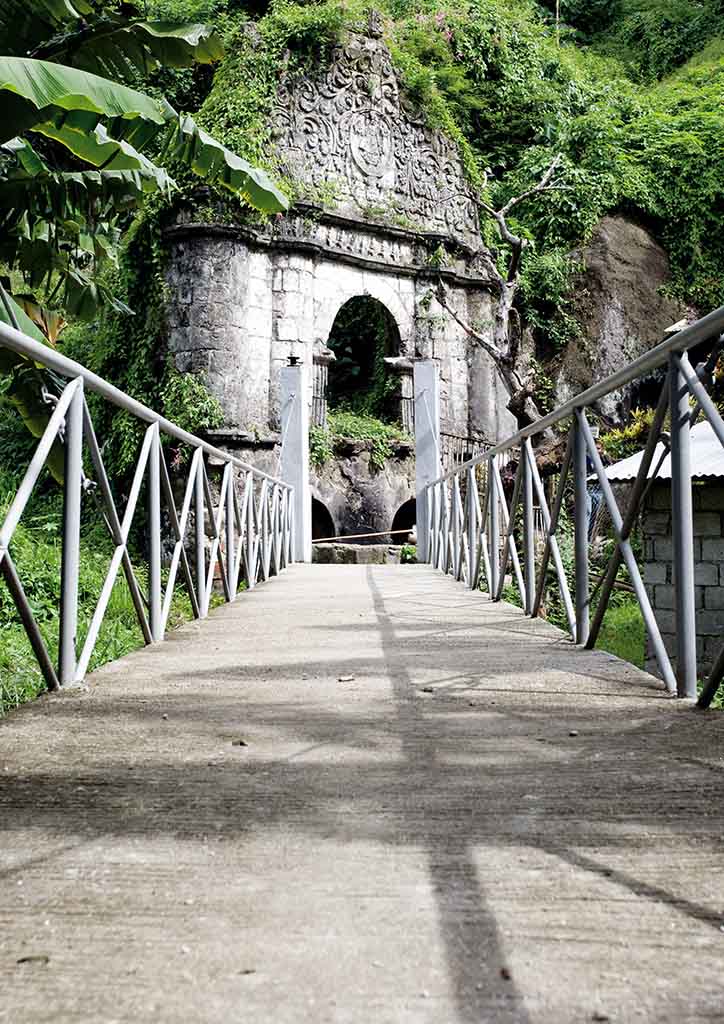
Saving Grace: How Caysasay Shrine, the first stone church, withstood the test of time and disasters
When the old town of Taal, now called the town of San Nicolas, was destroyed in 1754 by an eruption of Lake Bombon’s volcano, thousands fled and found themselves some 20 kilometers south, at the sanctuary of the Virgin of Caysasay at the sitio of Labac. Days after the eruption, grateful Taaleños celebrated the fiesta of Our Lady of Caysasay on December 8. This gave birth to a new town around the church that would become one of the most picturesque and historic towns in the Philippines today.

Records from church annals such as the Catalogo de Todos de los Padres Agustinos Calzados put the year 1603 as the beginning of the devotion to Our Lady of Caysasay. It is said that a certain fisherman named Juan Maningcad caught a little statue of the Blessed Virgin of the Immaculate Conception while fishing at the Pansipit River, which was a wide salt-water channel connecting Taal (then Bombon) Lake to Balayan (then Balangon) Bay. Since its discovery, several apparitions and miracles attributed to the image have been reported by the townsfolk, notably the disappearance of the image from its altar and its eventual rediscovery at a nearby spring. According to Fr. Pedro Galende, OSA, in his book Angels in Stone: Augustinian Churches in the Philippines, the Augustinians issued an order in 1620, under the direction of Fr. Alonso Rodriguez, to construct a church “in the same place and site as Caysasay, visita of Taal…(under the titular patronage) of Nuestra Señora de la Misericordia.”
The reef stone church was completed in 1640. It was the time of the great Sangley Revolt of 1639. Parts of the original coral stone and marble structure still stand to this day, making the church one of Taal’s oldest surviving structures. Its perimeter is surrounded by undulating walls typical of the period, its twin towers and Baroque features juxtaposed against a wide Roman portico that extends the façade halfway outward.
Small, delicately-crafted reliefs decorate the frieze and portico pillars at the front. Measuring 50 meters long and 10 meters wide, the church is well-lit with a cross-vault in the middle and a cimborrio embellished by little windows.
These windows light the trompe l’oeil paintings that adorn the transept as well as the presbytery, the dome, and ceiling projections across the nave. These depict religious motifs, biblical scenes, and apparitions of the Caysasay image. Behind the neo-Classical main altar is the sacristy, where devotees climb up staircases to adore the Virgin of Caysasay.
YOU MIGHT LIKE: The Church of Seashells: The Virgen Sang Barangay Chapel

The present church, according to anthropologist Regalato Trota Jose, is “pretty much the same as it was described in 1790: it had a single nave, a transept, a dome, and two towers; the walls of coral stone were one vara (about one meter) thick. What has not survived is a retablo that was in the form of a double-headed eagle, with its wings spread apart. Murals on the walls depicted miracles of the Virgin, but these were erased because they were unauthorized.”
Jose added that “although the absence of the Chinese in Taal has been observed, a pair of granite fu dogs in the inner courtyard and another pair of Chinese dragons over the neo-classic retablo suggest that this was not always so.”


The Chinese nuances are most plausibly explained by the fact that Chinese masons were commissioned to work for the construction of the first stone church. Most notable was Juan Imbin, whose Chinese name was Hay Bing. He was one of the 20 Chinese in Caysasay who were arrested and were to be executed by the Spaniards during the uprising, but he escaped death through a miracle attributed to the Our Lady of Caysasay. Imbin lived on to complete the construction of the church in 1640.
Because of such accounts, many Filipino-Chinese devotees have kept their syncretic ties with the Virgin, for whom reverence has spread as far as La Union in Northern Luzon, where the Chinese goddess image of Ma-Tzu, enshrined in the Taoist temple in San Fernando town, is believed to be a manifestation of Our Lady of Caysasay.
READ MORE: Sculpted illusions at the Basilica Minor of Immaculate Conception in Batangas

It is said that Jian Imbin’s devotion slowly cooled as the years passed, until his fervor turned into bored indifference. No reason is given for the demise of his passion, but as the story goes, he died a miserable death.
A parallel to Imbin’s story of ardor-turned-apathy can be seen in the fate of a nearby landmark.
Behind the Caysasay Church courtyard is a 123-step stairway of piedra china that leads to an elaborate arch of carved coral stone. The arch marks the spot where the Lady of Caysasay is said to have appeared, in 1611, before some women gathering wood beside a spring.
In time, townsfolk believed that the water from the spring was miraculous, and dug out two small pools so that pilgrims might dip themselves in the water. The place is called the Sta. Lucia Well. Today, however, fresh water no longer appears to spring forth from the Sta. Lucia Well. Instead, the little water that is left at the bottom of the two pools is murky; its foul odor threatening to overpower whatever miraculous properties the water may have. Whether it is people’s cooling passions that have caused the site to look like a garbage dump or vice versa, it is no longer sure. But unless its caretakers give a care soon, pilgrimages to the well will surely die a miserable death.


